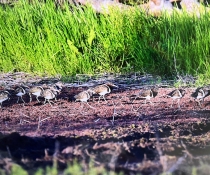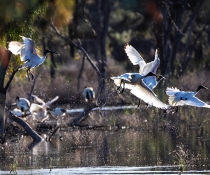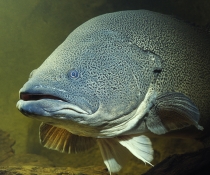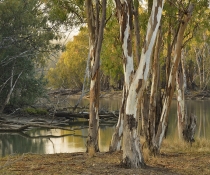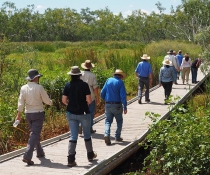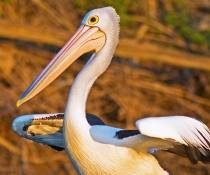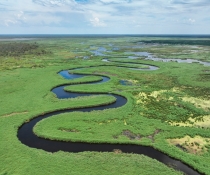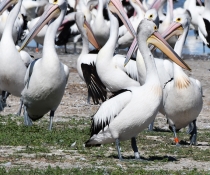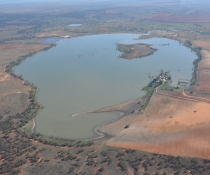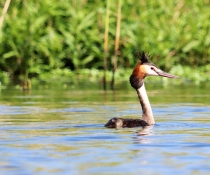Into the Marshes a day in the life of our field staff
Every day somewhere in the state, environmental water managers are in the field following flows, assessing animal responses and planning for the future of their local rivers and wetlands.

The work of water managers is varied. They can be waist deep in water one day, meeting with stakeholders the next or boarding an aircraft to get a bird’s eye view of water for the environment at work. Based in the regions, our water managers have strong connections to the rivers, wetlands, and communities where they live and work.
Last month, I jumped at the chance to participate in waterbird surveys at the Ramsar listed Macquarie Marshes. As a Community Engagement Officer in the Water for the Environment program, I’m often out and about in regional New South Wales. When the Macquarie team needed an extra set of eyes for bird surveys, I was keen to get my feet wet, my hands dirty and see firsthand how Water for the Environment makes a difference.
The day began early in Dubbo where I was picked up by my host Tim Hosking. Tim is the environmental water manager for the Macquarie catchment. Tim works closely with local stakeholders to manage the delivery of allocated environmental water for environmental outcomes including birds, fish, and other water dependent animals along with riparian and aquatic vegetation.
We loaded up and headed to the Macquarie Marshes, a few hours’ drive north-west of Dubbo.
The Macquarie Marshes system covers an area of more than 200,000 hectares and are the traditional lands of the Wayilwan People.
A reduction in the frequency, size, and duration of flows into the Macquarie Marshes, one of the largest remaining semi-permanent wetlands in South-Eastern Australia, is a crucial water management issue. Recent spring and summer rainfall has created conditions that are suitable for colonial waterbird breeding.
Tim describes his role and a function of the environmental water portfolio in wet years as ‘maximising the success of these infrequent colonial nesting events’. The last time birds nested in these numbers was 2016.
We arrived on location and met the monitoring team which included experts from the Department of Planning and Environment and the NSW National Parks and Wildlife Service. I received a safety briefing and my equipment including kayak, lifejacket, clipboard, and binoculars. I was teamed up with Tim who was the spotter, while I would be the scribe. The team explained to me their code for recording nests by tree type and number of chicks associated with nests. Before long we were dragging kayaks into the water and I was about to plunge myself into the Macquarie Marshes – quite literally. I completely underestimated the skill required to navigate and position the kayak in stream so that I could record the nest numbers that were expertly rattled off by Tim. It was a very steep learning curve. I was able to (barely) keep up and begin to take in the wonderful environment I was in.
The place was teeming with life, the sounds, and the smells were incredible. We encountered colonies of Nankeen night herons, eastern great egrets, intermediate egrets and straw-necked ibis. As it was toward the end of the season, there were some empty nests, and nests occupied by almost fledged chicks. A little-known fact about nesting birds is that carefully aimed regurgitated fish, yabbies, frogs, and mice are used to divert the attention of would-be predators, including us. The experience was intoxicating, disgusting (the smell!), and often amusing. It was the best insight into an iconic ecosystem that I could have hoped for.
The day wrapped-up around the dinner table at a nearby homestead. The team discussed the day’s events, observation, and anecdotes. I learned that ‘birdos’ are often keen photographers and can take amazing photos which are analysed and shared as we completed our data sheets for the day.
We prepared for the next day of monitoring activities and eventually retired for the evening.
I reflect on how privileged I am to have the opportunity to immerse myself in the environment, and see some of the results of the skill, passion, and dedication of the Water for the Environment team.
There are teams of water managers working across the state to ensure water for the environment is delivered where and when it is needed for the best possible environmental response. Water for the environment is the best tool available to ensure our rivers and wetlands are primed and ready to take advantage of the large-scale natural events when they occur.
For more information, visit Water for the Environment.

